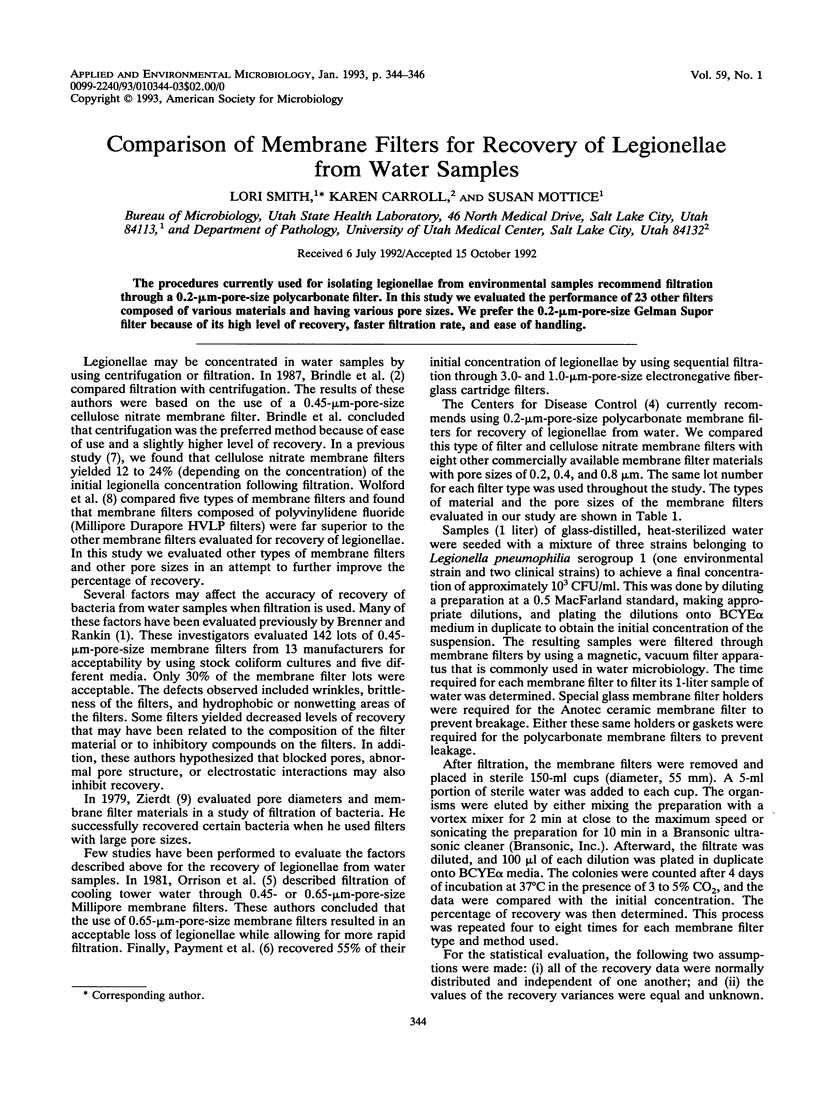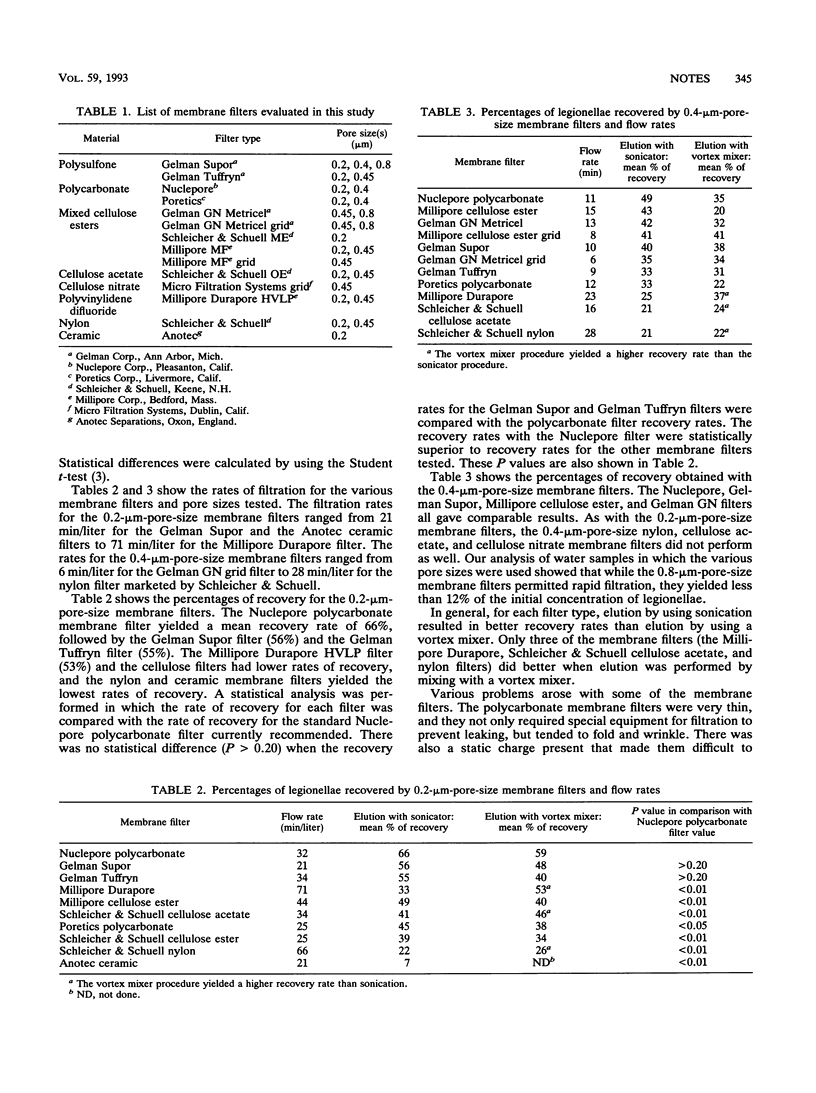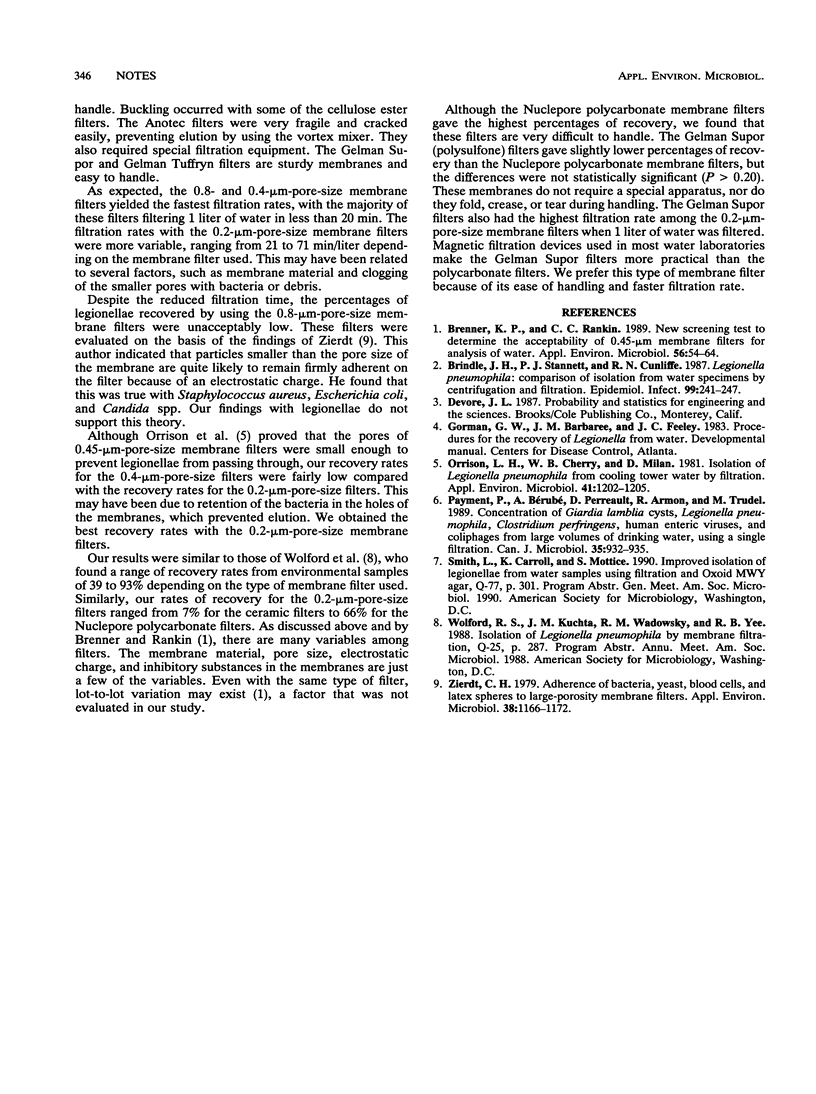Abstract
The procedure currently used for isolating legionellae from environmental samples recommend filtration through a 0.2-microns-pore-size polycarbonate filter. In this study we evaluated the performance of 23 other filters composed of various materials and having various pore sizes. We prefer the 0.2-micron-pore-size Gelman Supor filter because of its high level of recovery, faster filtration rate, and ease of handling.
Full text
PDF


Selected References
These references are in PubMed. This may not be the complete list of references from this article.
- Brenner K. P., Rankin C. C. New screening test to determine the acceptability of 0.45-micron membrane filters for analysis of water. Appl Environ Microbiol. 1990 Jan;56(1):54–64. doi: 10.1128/aem.56.1.54-64.1990. [DOI] [PMC free article] [PubMed] [Google Scholar]
- Brindle R. J., Stannett P. J., Cunliffe R. N. Legionella pneumophila: comparison of isolation from water specimens by centrifugation and filtration. Epidemiol Infect. 1987 Oct;99(2):241–247. doi: 10.1017/s0950268800067704. [DOI] [PMC free article] [PubMed] [Google Scholar]
- Orrison L. H., Cherry W. B., Milan D. Isolation of Legionella pneumophilia from cooling tower water by filtration. Appl Environ Microbiol. 1981 May;41(5):1202–1205. doi: 10.1128/aem.41.5.1202-1205.1981. [DOI] [PMC free article] [PubMed] [Google Scholar]
- Payment P., Bérubé A., Perreault D., Armon R., Trudel M. Concentration of Giardia lamblia cysts, Legionella pneumophila, Clostridium perfringens, human enteric viruses, and coliphages from large volumes of drinking water, using a single filtration. Can J Microbiol. 1989 Oct;35(10):932–935. doi: 10.1139/m89-154. [DOI] [PubMed] [Google Scholar]
- Zierdt C. H. Adherence of bacteria, yeast, blood cells, and latex spheres to large-porosity membrane filters. Appl Environ Microbiol. 1979 Dec;38(6):1166–1172. doi: 10.1128/aem.38.6.1166-1172.1979. [DOI] [PMC free article] [PubMed] [Google Scholar]


